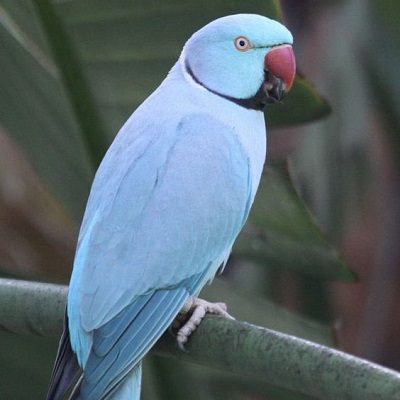
Who ever would have suspected that drugs and rock ‘n’ roll would be a part of our Animal of the Month feature? If you were following us on Twitter @ExoticPetVets, you would have seen our tweets all April about the very adaptable Indian ringneck parakeets, including the tweets about their poppy-field raids and the urban legends attached to them. But if you missed any, there is no need to fret! We have a summary of our tweets right here for your reference. Did you know?:
- Their name obviously reveals from where Indian ringneck parakeets (Psittacula krameri manillensis) originate – India, of course.
- In the wild, Indian ringneck parakeets live in semi-arid forests and woodlands. But they have been able to survive human-caused destruction of their habitat and have moved successfully into urban areas.
- Because they are hardy and highly adaptable birds, feral populations of Indian ring-necked parakeets have popped up around the world – including parts of Europe and the United States.
- Indian ringneck parakeets are considered to be one of the most successful invasive species in the world.
- There are a few urban legends surrounding the origin of the large feral population of Indian ringneck parakeets in the London area.
- Some people believe that in the 1960’s, rock legend Jimi Hendrix released a pair of Indian ringneck parakeets on London’s Carnaby Street.
- There is another theory that suggests London’s feral Indian ringneck population can be traced to escapees from Shepperton Film Studios in 1951 when “The African Queen” was being filmed.
- And yet another theory behind the feral Indian ringneck parakeet population points to those birds who escaped the London Zoo in the early 1940’s when the Nazi’s London Blitz damaged the zoo.
- The most likely explanation is London’s feral Indian ringneck parakeet population can trace its roots to pets who either escaped their homes or who were unwanted and deliberately released.
- Indian ringneck parakeets are medium-sized birds, measuring approximately 40 cms (16 inches) in length when fully grown.
- Wild Indian ringneck parakeets are naturally mostly green with some blue on their tails and yellow feathers under their tails and wings. They also have distinctive hooked red beaks.
- It’s very easy to tell female and male Indian ringneck parakeets apart, which means they are sexually dimorphic.
- Male Indian ringneck parakeets have the famous rose-coloured ring around their necks. They also have black facial markings.
- Female Indian ringneck parakeets lack the ring and the facial markings that their male counterparts have.
- It has been recorded that Indian ringneck parakeets have been kept in captivity as pets since 200 BC by royalty and other members of the wealthy elite who housed the birds in fancy cages.
- Despite their long history of captivity, it wasn’t until the 1920’s that breeding captive Indian ringneck parakeets started.
- Selective breeding of captive Indian ringneck parakeets has resulted in many colourful mutations, including blue, lutino (yellow) and albino.
- Indian ringneck parakeets in captivity need a lot of attention, interaction and play. They can make good family pets as long as people are willing to spend time handling and socializing with them every day.
- If neglected, Indian ringneck parakeets in captivity can become temperamental, defiant and unfriendly. They may also become biters.
- Indian ringneck parakeets are also very sensitive to too much noise and commotion so they may not do well in a family with children.
- Indian ringneck parakeets can learn to whistle and talk. They are good talkers and can be very chatty and repetitive with the words they know.
- Indian ringneck parakeets are a menace to poppy farmers in the Indian state of Madhya Pradesh.
- Flocks of Indian ringneck parakeets have essentially become roving gangs of opium addicts raiding poppy fields and making off with the goods.
- If you’re going to adopt an Indian ringneck parakeet into your family, be prepared for a long-time companion. With proper care, Indian ringneck parakeets can live for more than 30 years.

